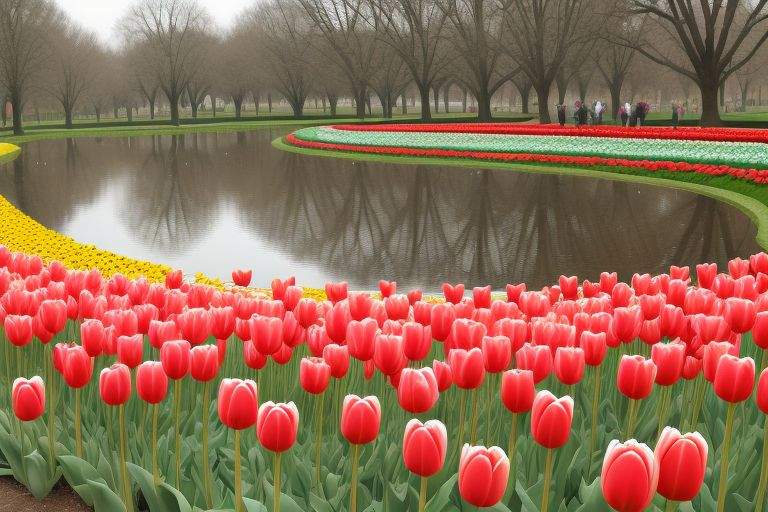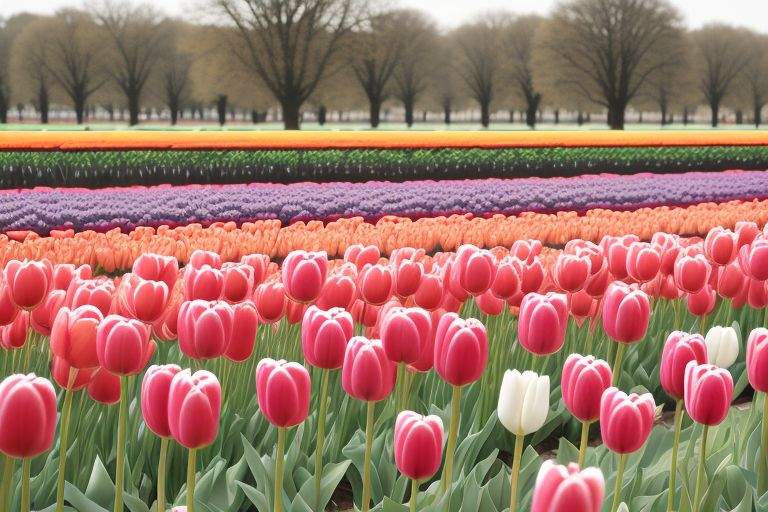
Flowers have long captivated the human imagination and have been celebrated for their beauty, fragrance, and cultural significance. Among the myriad of floral varieties that grace our gardens and landscapes, tulips hold a unique position, often regarded as one of the best flowers in the world. Their striking aesthetics, versatility, historical significance, and cultural symbolism contribute to their esteemed status in the horticultural realm. In this essay, we will delve into the multifaceted reasons that make tulips exceptional and illustrate why they deserve the title of the best flower in the world.
Aesthetic Appeal
First and foremost, tulips are renowned for their remarkable aesthetic appeal. With a wide range of colors, shapes, and sizes, tulips offer an extraordinary visual experience unmatched by many other flowers. Their iconic cup-shaped blooms come in nearly every color in the spectrum, from vibrant reds and yellows to soft pastels and deep burgundies. This diversity makes tulips incredibly versatile, allowing them to fit seamlessly into any garden design or floral arrangement. The structured form and smooth petals of tulips provide a refined elegance that enhances the beauty of landscapes, be it in parks, private gardens, or large floral displays.
Additionally, the tulip’s bloom period heralds the arrival of spring, breathing life into the barren landscapes that have endured the winter chill. The vibrant colors and graceful shapes of tulips emerging from the ground can infuse a sense of joy and optimism, making them a favorite among home gardeners and commercial florists alike. Furthermore, various species and hybrids, such as Darwin hybrid tulips, parrot tulips, and fringed tulips, contribute to their broad appeal by offering distinct textures and forms that enrich the visual landscape.
Durability and Ease of Care
Another compelling reason why tulips excel as the best flowers is their durability and ease of care. Unlike many delicate blooms that require meticulous attention and favorable conditions, tulips are relatively low-maintenance. They adapt well to a range of environments and can thrive in various soil types, provided they have proper drainage. Once planted, tulip bulbs can remain in the ground year after year, flourishing with minimal intervention. This hardiness makes them an attractive option for gardeners of all experience levels, from novices to seasoned experts.
Tulips are also resistant to pests and diseases compared to other flowers, giving them an added advantage in maintaining a healthy and flourishing garden. Their straightforward growth cycle—from bulb to bloom—allows gardeners to enjoy the fruits of their labor in a relatively short period, often within a few months. This rewarding experience fosters a sense of accomplishment and encourages gardening enthusiasts to engage with the natural world.
Cultural and Historical Significance
Beyond their physical attributes, tulips boast a rich cultural and historical significance that further elevates their status. Originating in Central Asia, tulips were first cultivated by the Ottoman Empire and became a symbol of opulence and luxury. The Turkish passion for these flowers eventually spread to Europe in the 16th century, leading to tulipomania, a phenomenon where tulips reached absurd market values and had a profound impact on art, literature, and social commentary of the time. This historical fascination has woven tulips into the fabric of cultural narratives across the globe.
Tulips are also steeped in symbolism. In various cultures, they represent love, beauty, and renewal, often used to convey heartfelt emotions in romantic contexts. Different colors of tulips carry specific meanings; for example, red tulips symbolize true love, while yellow tulips are associated with cheerful thoughts. This rich tapestry of symbolism ensures that tulips are frequently chosen as gifts for celebratory occasions, such as weddings, birthdays, and holidays, further solidifying their cherished place in human tradition.
Ecological Benefits
In addition to their beauty and cultural significance, tulips provide ecological benefits that enrich biodiversity. As spring-blooming perennials, tulips are crucial for early pollinators, such as bees, which emerge from hibernation during the flowering period. By planting tulips, gardeners contribute to the health of local ecosystems, supporting pollinator populations essential for the balance of nature. Furthermore, tulips serve as excellent companion plants, complementing other species in flower beds while enhancing overall garden vitality.

In conclusion, the tulip stands out as the best flower in the world for an array of reasons that encompass aesthetic beauty, ease of care, historical richness, and ecological contributions. Their captivating blooms, combined with the joy and renewal they symbolize, make tulips a perennial favorite among florists, gardening enthusiasts, and cultural icons alike. As we celebrate the charm of tulips, it is evident that their vibrant presence in our gardens and landscapes not only enriches our lives with beauty but also connects us to a broader cultural and ecological narrative that transcends time and geography. Whether planted in a meticulous garden or given as a heartfelt gift, tulips resonate with a universal appreciation for nature’s artistry, firmly securing their place as the best flowers in the world. To more knowledge about Tulips, read Wikipedia.









